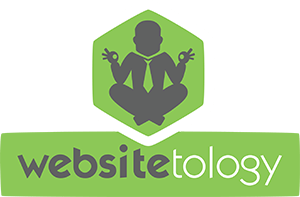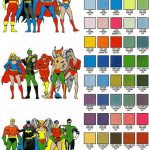Style guides can be an invaluable tool for your business in both physical and digital spaces. For example, if you are working with anyone else to make a website, or design a business card, having a style guide can go a long way in making sure everything is done right the first time.
Without one, you are sure to face constant back and forth communication for this information and multiple redesigns and rewrites when something doesn’t come out the way you want it.
Wikipedia defines a style guide as:
[A] set of standards for the writing and design of documents, either for general use or for a specific publication, organization, or field. A style guide establishes and enforces style to improve communication. To do that, it ensures consistency (within a document and across multiple documents) and enforces best practice in usage and in language composition, visual composition, orthography (including spelling, capitalization, hyphenation, and other punctuation), and typography.
Source: Style guide – Wikipedia, the free encyclopedia
Style guides go back a long time. If you take a peek at http://thestandardsmanual.com/ you will find the very first edition of the style guide for the New York City Transit Authority, published in 1970. Signage for the subways in NYC have such a distinctive look because the city created a style guide to provide a consistent message that would not be confused.
Style guides don’t have to be dozens of pages or be specifically about branding, either. Especially for smaller businesses, a single page with the correct color palette and some high-quality (preferably vector eg. .ai or .eps) files containing your logo can suffice.
The web is a perfect platform to host your style guide, but many companies have been hesitant to embrace the medium. For example, Apple’s latest style guide is a sprawling 197-page PDF. Not exactly terrific bathroom reading.
Uber, the private-contractor based cab company on your phone, is a company that most definitely embraces the web with it’s branding guideline website. Everything you need to know about the brand is freely available, and the appropriate logos are available to download without any hoops to jump through. It’s even built on WordPress, so you know we’re excited about it.
What it really means is that you don’t have to be a huge tech company to put out your own style guide, the foundation is out there for anyone regardless of technical or design backgrounds.
The final code that you will be using should look something like this:
<iframe src="https://www.youtube.com/embed/rWl4y1-rdMw?rel=0;3&autohide=1&showinfo=0" frameborder="0" width="635" height="353"></iframe>
*Note: The Youtube URL, Width, and Height will vary.
The part that needs to be added to the URL after the “rel=0” part is this:
;3&autohide=1&showinfo=0
Youtube will automatically give you all of the code that you need for the size and showing the related videos, so we only need to worry about the part listed above for the coding part. Just paste this after the “rel=0” section.
The end result will be similar to the way the video on this page looks. The dimensions of the video fit nicely into the blog post, and there will be a simple poster frame and play button instead of displaying the video info and the play bar at the bottom. There is also no border around the frame. When the video plays, you will notice that the play bar will hide itself as you hover away, but if you hover over the video you can still change the resolution, make the video fullscreen, enable captioning, etc. When the video is paused, the video title and information are not displayed. At the end of the video, the related videos are not displayed. This keeps the focus on your blog, and prevents something coming up that you may not want to associate with your blog. It appears that the newest form of embedded Youtube videos no longer have the Youtube logo in the corner of the video anymore, so we don’t have to worry trying to remove the Youtube logo.
Thankfully, the days of the not being able to edit the way your embedded Youtube videos look are apparently gone. For those who want to further customize their embedded videos, Google has a list of several other Youtube Embedded Player Parameters.
As professional web developers of both the Joomla! and WordPress Content Management Systems (CMS) we come across many different surveys and comparisons of the two. Water and Stone poses the question “What is the most popular open source content management system?” and actually uses statistics to provide an unbiased report.
If you’ve ever wondered if WordPress and Joomla! truly are the best pieces of software that we could be using, then take a look at this survey. In the first few pages you’ll read “that three systems have come to dominate the present market: WordPress, Joomla! and Drupal.” But don’t just take that as proof, look at some of the stats that are given throughout the 51 page paper.
Search Engine Visibility
The Next Wave’s core competency compared to other web hosting and design firms in the Dayton area is that we focus on getting our clients on the front page of Google. Sure, you can have a great looking website, but if no one can see it what’s the point? So, one of the first thing we looked for in this survey was any information on search engine ranking for WordPress and Joomla!.
Joomla! comes out on top with more than 1 million inbound searched links at the time of the survey, with WordPress right behind with 403,000. Notice phpnuke and MediaWiki with more than a million links as well, however these are “black hat” search engine optimization techniques that were implemented to create and keep inbound links permanent to skew search.
Do a search for “Content Management System”, and Joomla! comes up second in Google. A search for “Blog Software” (or a variant of that) and WordPress is right up there on top. This just shows that the websites that provide these two are strong in search engine optimization and Google loves to read from them. If you have a website powered by them, Google will love your site too (provided you continually update).
You can also see what people are searching for on Google, and the results that turn up for those searches. The top two systems? You guessed it, WordPress and Joomla! with a huge margin of difference from the third CMS on the list Drupal.
Ratings
OpenSourceCMS.com has a list of all of these and allows visitors to rate and comment on the various ones that are in use. For ratings, WordPress comes out on top with a rating of 4.4 out of 5. Joomla!’s up there too, with 4.2 out of 5.
Brand Strategy
“The open source CMS market is maturing and, with the increase in competition, the competitive landscape is changing. The historical leaders have been supplanted by new names. The data collected in this portion of the survey shows that in almost every way the mind share in today’s market is dominated by just three brands: WordPress, Joomla! and Drupal.”
WordPress and Joomla! are at the top of everything in this survey. Their branding is superb and still growing, their ranks and ratings are high above the rest of the pack, and both have HUGE community groups that help to make the two CMS’s more stable, more flexible, and even better for web development than other systems. The next time someone says that Joomla! and WordPress aren’t good for web design, tell them otherwise. The facts are there, leading edge developers realize these systemsenable amazing work for clients in at minimum- half the time as building a website from scratch.
Read this, read it again if you want to. Print it out and pass it to your co-workers or show it to your boss so that he/she will let you start using WordPress or Joomla!. And if you’re interested in learning more about the systems, come to our next Websitetology seminar and we’ll give you the crash course that will set your business on top.


